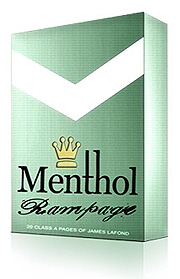Right out of the gate with the SWAT operatives we get mature valuation of their own gear, with the weapons expert noting the drawback of the firearm right up front and then stating his case that the benefits outweigh the drawback of excessive weight.
The use of firearms, predictably, offers more accurate testing of tactics, by utilizing police training courses. This is an opportunity to reflect on how much more savage and variable hand-to-hand combat is, as illustrated by the inability to replicate a more interactive, proximate reality.
There is essentially no difference in the SWAT and GSG9 performance in the hostage scenario. However, if I could make one request as a potential Dindu martyr hostage. I have a bad back. Could you please not send GSG9 in to get me out. Did you see how the big operator just threw the hostage dummy on the ground like a sack of grain? That would put me in traction for a month!
It is fitting that we have a peacetime super soldier and a martial arts champion on the German side and on the American side two guys that kick a lot of ass on a week to week basis due to being in an active drug war zone.
As far as the personalities in this video, the small, German martial arts champion gets the Pig Trophy—he is the guy that’s going to make fun of you as you get stuffed in the paddy wagon.
The big German gets the Igor trophy, for the guy that’s going to be killing some other fool in his mind right after you bite the dust. These two are the worst possible pair of TV cops to get nailed by.
On the other hand, both of the Americans are of the classic type of , “Yeah, we’re great and you suck, so what did you expect,” cowboy cop of American legend. As a possible SWAT target, I’ll take those two assholes over the monstrous German threat.
This is the second episode in which the experts have taken a pump shotgun against an automatic shotgun and failed. I wish I knew how much more reliable the pump was so that I could place a value on the decision to stay with a pump, but I do not. Interestingly, the weapons are not chosen nationalistically, but rather taken from the international market according to the philosophy of the various police forces. Both forces use a Remington weapon, which makes this a great advertisement for that company.
As an enemy of the State in its many forms, this is the one battle I’d love to see, rival government goons taking each other apart. In the end, I’m just hoping for maximum casualties.
Taboo You: Deluxe Man Cave Edition











The pump shotgun or the semi-automatic shotgun? In absolute terms the pump shotgun is the more reliable since it is not at all ammunition sensitive. This means that special purpose ammunition such as bean-bag rounds, breeching rounds, tear gas shells, flare rounds, flechette rounds and such will all cycle through the manually powered pump-action shotgun as efficiently as will conventional birdshot, buckshot and slug shells. Pumps can be chambered to cycle variable length shells ranging from 2.5" up to 3.5" without a problem as well. A semi-automatic shotgun on the other hand is designed to use the recoil impulse of conventional shells to cycle its action and therefore the action might fail to reliably load and eject shells that possess a lesser or greater recoil impulse, or a nonstandard length. So as long as you use conventional shotgun ammo with a modern semi-automatic shotgun you can expect it to function as reliably as a pump. Sometimes it will work even better, since it is possible for an inexperienced operator to jam a pump shotgun by short-stroking the action, whereas such a malfunction would not be possible with a semi-auto. Also you can fire and empty a semi-auto one-handed, even while doing an Australian rappel down the side of a building. Something you could not do with a pump since you’d need to have both hands free to operate it. But why do the SWAT cops and the GSG9 operators prefer the pump to the semi-auto shotgun? I‘m sure they have cogent reasons. SWAT and SF operators for all their bravado tend to be anal and risk adverse in the selection of their equipment, so I must imagine that in this instance the SWAT Cops and GSG9 operators both opted for the greater functional reliability of the pump. Semi-automatic shotguns sell for two to three times the price of the average pump, but while such a cost differential could, and probably would, be an important consideration for either an individual civilian purchaser or the procurement officer of a large conventional military or police organization, I cannot imagine it had any major influence in the decision making process for special purpose units like SWAT or GSG9. Money was probably no object in selecting the weapons and equipment they figured they needed to accomplish their mission. The Remington model 870 (over 10 million made since 1951) and the Mossberg model 500 pumps are among the most popular shotguns for police and military use throughout the world.
P.S. With a pump shotgun it's also easier to eject a dud shell from the chamber, reload a fresh cartridge and keep firing. All in one motion, without having to reposition your hands or take your eyes off the target. You can eject a misfire fairly quickly with a semi-auto shotgun as well, but doing so does often require repositioning your hands to retract the bolt handle and taking your eyes off the target, especially if this is not a practiced motion. Some shooters are still paranoid about misfires even though there is little reason to be so concerned about them these days, given the reliability of modern ammo (Is this the case with the SWAT cops and GSG9 operators?). Ammunition is much more reliable than is it was 50 years ago or more, due to improved materials and improved quality control in the manufacture of said ammunition. For one, corrosive mercury-based compounds are no longer used in the manufacture of cartridge primers. The mercury primer compounds would deteriorate over time such that cartridges manufactured with them would become increasingly prone to misfires after being stored for a decade or two, or three. So misfire drills due to dud cartridges were once something a soldier practiced often on the range. Not so much anymore, not with contemporary factory-made center-fire ammunition. Since the late 1960’s shotgun shells have been manufactured with sturdy weather resistant plastic hulls over a brass base, rather than “paper” (cardboard) hulls as in the past (Remember that scene in “The Road Warrior” where Mad Max rolls the paper shotgun shells between his fingers to see if they will hold together?). In years past, the military used all-brass shotgun shells which were more expensive to manufacture than paper shells, but more weather resistant. Nobody knows what the shelf life is on modern factory-made center-fire cartridges. Maybe they will stay good for centuries if reasonably well-packaged and stored in a controlled climate. So there is much less reason to be suspicious of the reliability of semi-automatic firearms than there was in the past.
"Never trust a district attorney, a woman or an automatic pistol." - John Dillinger (Regardless of his advice, Dillinger was frequently in the company of women and used Colt semi-automatic pistols almost exclusively)